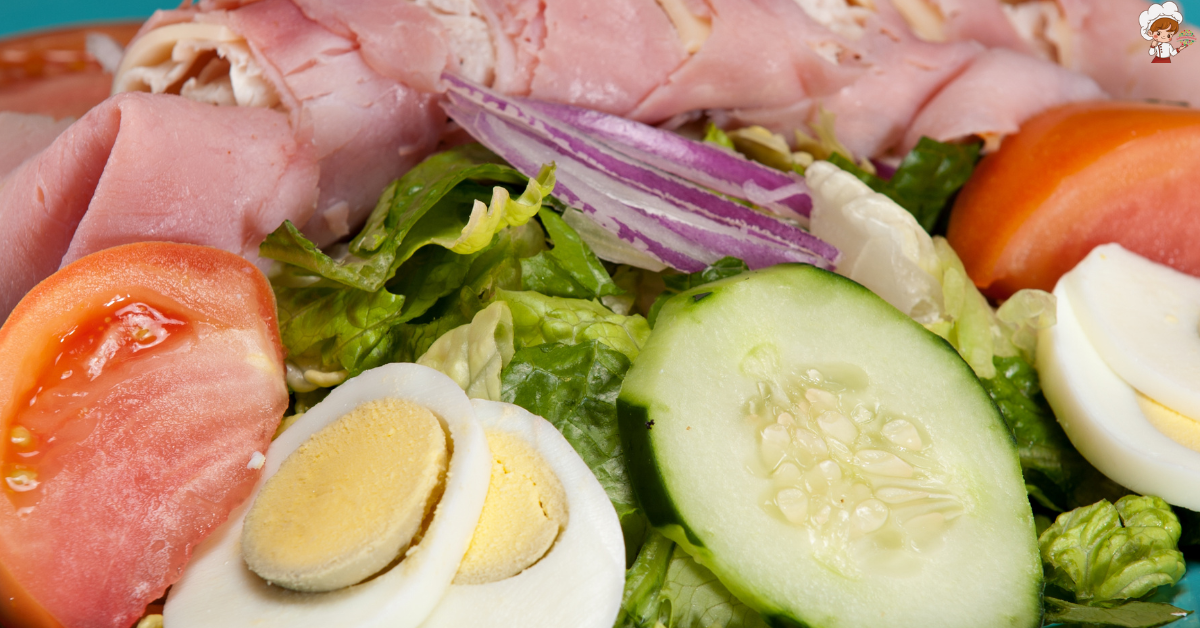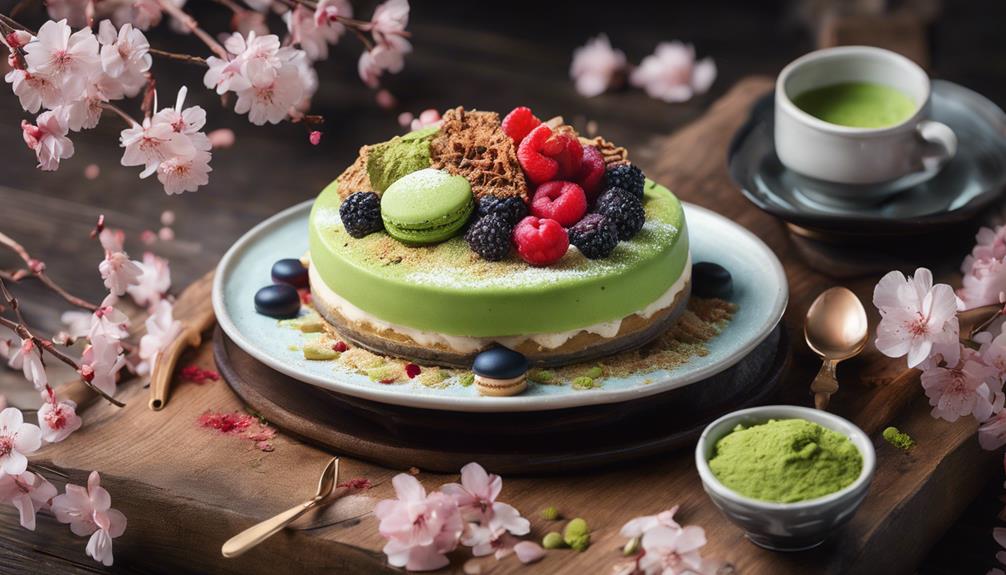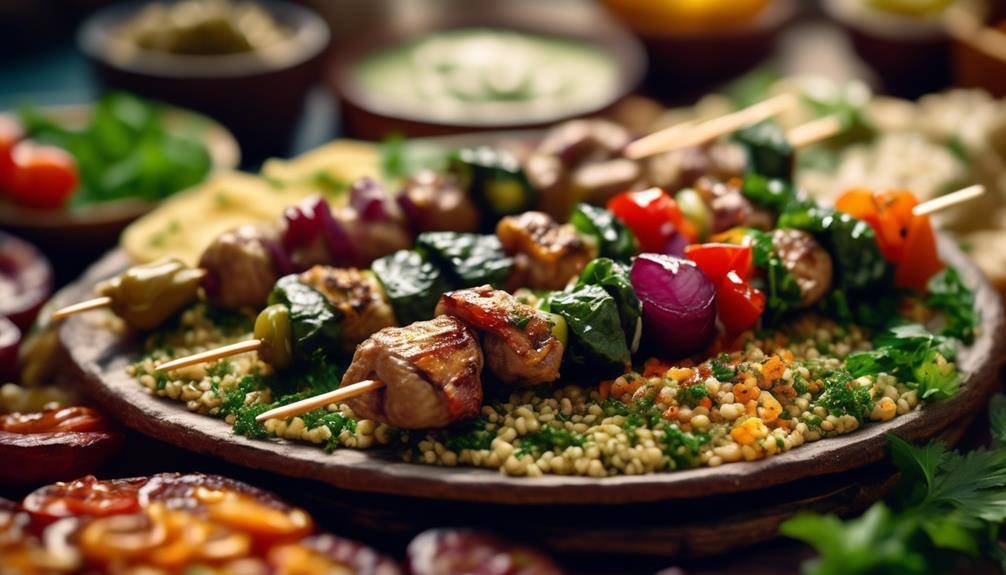Amazing Greek Cheese Varieties And Their Characteristics

Amazing Greek Cheese Varieties, with its tantalizing array of flavors and textures, has long held a special place in culinary traditions around the world. And when it comes to Greek cheese varieties, there is a veritable treasure trove waiting to be explored. From the creamy richness of Feta Cheese to the salty tang of Kefalotyri Cheese, each variety brings its own unique characteristics to the table. But what exactly sets these cheeses apart? What makes them truly Greek? Join us as we embark on a journey through the world of Greek cheese, uncovering the secrets behind each variety and discovering the delights that await.
Feta Cheese
Indulge your taste buds in the tangy and creamy delight of Feta cheese, a beloved Greek cheese variety. Feta cheese is not only delicious but also offers numerous health benefits. Made from sheep’s milk or a combination of sheep’s and goat’s milk, Feta cheese is known for its crumbly texture and distinct flavor. It is produced using traditional methods that have been passed down through generations, ensuring its authenticity and quality.
Feta cheese is a staple in Mediterranean cuisine, adding a rich and savory element to a variety of dishes. It is commonly used in salads, where its salty and tangy taste complements the freshness of vegetables. Feta cheese also pairs well with fruits, providing a delightful contrast of flavors. In Greek cuisine, Feta cheese is used in baking, sandwiches, wraps, and dips, adding a creamy and savory component to these dishes.
The versatility of Feta cheese extends beyond savory dishes. It can be incorporated into desserts, giving a unique twist to sweet treats. Additionally, Feta cheese can be used in soups, stuffed vegetables, marinades, dressings, and even omelettes, enhancing the overall taste and complexity of these dishes.
Incorporating Feta cheese into your diet not only enhances the flavor of your meals but also provides health benefits. It is a good source of calcium, protein, and essential vitamins and minerals. The consumption of Feta cheese has been linked to promoting bone health, supporting digestion, and boosting the immune system.
Kefalotyri Cheese
Get ready to savor the rich and robust flavors of Kefalotyri Cheese. This Greek delicacy is known for its lengthy aging process, resulting in a firm texture and a bold, tangy taste. From grating it over pasta dishes to using it as a key ingredient in traditional Greek recipes, Kefalotyri Cheese adds a distinct and savory depth to your culinary creations. Pair it with a crisp white wine or a fruity red to elevate your dining experience to new heights.
Aging Process and Flavor
As Kefalotyri cheese ages, its flavors intensify, transforming into a rich and robust symphony of savory notes that dance upon your palate. The aging process of Kefalotyri cheese is a carefully crafted journey that results in a cheese with a distinct character and depth of flavor. The cheese develops a firm texture, with a slightly crumbly and granular consistency.
The flavors become more pronounced, revealing hints of nuttiness, saltiness, and a delightful tang. The aging process allows the cheese to develop a complex aroma, reminiscent of caramel and toasted nuts. The longer the cheese is aged, the more pronounced these flavors become, creating a cheese that is bold, flavorful, and utterly delicious. Each bite is a sensory experience, as the flavors linger on your tongue, leaving you craving for more.
Culinary Uses and Recipes
Embark on a culinary adventure with Kefalotyri cheese, as its bold and robust flavors bring a delightful richness to a variety of dishes. This versatile cheese is commonly used in Greek cuisine for its ability to enhance the flavors of both traditional and modern recipes. With its firm texture, Kefalotyri cheese is perfect for grating over pasta dishes or salads, adding a salty and tangy kick. It can also be melted and used as a topping for baked vegetables or soups, creating a creamy and savory finish.
The culinary techniques of grating and melting allow the cheese to fully express its complex taste profile. In addition to its culinary uses, Kefalotyri cheese also offers nutritional benefits, such as being a good source of protein and calcium. So, whether you’re looking to add a burst of flavor to your meals or enjoy the health benefits of this cheese, Kefalotyri is a must-have ingredient in your kitchen.
Pairing Suggestions
Discover the perfect pairings for Kefalotyri cheese and elevate your culinary creations to new heights with its bold and distinct flavors. This hard, salty cheese is a versatile ingredient that can enhance a variety of dishes. For a simple but satisfying option, grate Kefalotyri over roasted vegetables or sprinkle it on top of a Greek salad for an added burst of flavor.
Its intense taste also makes it an excellent addition to pasta dishes, such as spaghetti aglio e olio, where it can be grated or shaved over the top. If you’re feeling adventurous, try pairing Kefalotyri with honey or figs for a delightful balance of sweet and savory. Whether used as a garnish or a starring ingredient, Kefalotyri cheese is sure to impress with its rich, tangy notes.
Halloumi Cheese
You’re in for a treat as we explore the delightful world of Halloumi cheese. With its unique taste and texture, Halloumi is a true standout among Greek cheeses. Its firm, yet springy texture, and its slightly salty and tangy flavor make it a versatile ingredient in the culinary world. Whether grilled to perfection or fried to a golden crisp, Halloumi cheese is sure to elevate any dish with its distinct character.
Taste and Texture
Halloumi cheese tantalizes the taste buds with its unique combination of savory flavor and firm, yet delightfully chewy texture. This Greek cheese is made from a blend of sheep’s and goat’s milk, which undergoes an aging process to develop its distinct characteristics. The flavor profiles of Halloumi can vary, ranging from mild and slightly salty to tangy and robust. Its texture is what truly sets it apart from other cheeses.
When cooked, Halloumi forms a golden crust on the outside while remaining soft and gooey on the inside. The result is a cheese that is both satisfyingly firm and wonderfully chewy. Whether grilled, fried, or enjoyed as is, Halloumi promises a delightful sensory experience that will leave you craving more.
Culinary Uses
As you explore the culinary possibilities of Halloumi cheese, prepare to embark on a mouthwatering journey that will awaken your taste buds and ignite your creativity in the kitchen. Halloumi cheese, with its unique taste and texture, lends itself to a wide range of culinary techniques that will elevate your dishes to new heights.
Whether you grill it, fry it, or bake it, Halloumi cheese maintains its firmness and doesn’t melt, making it perfect for adding a deliciously salty and savory element to your meals. Its cultural significance adds another layer of depth to its culinary uses, as it is a staple in Greek cuisine and often enjoyed as a part of a mezze platter or in traditional Cypriot dishes like halloumi souvlaki. So go ahead, experiment with this versatile cheese and let your taste buds savor the flavors of Greece.
Graviera Cheese
A popular Greek cheese variety that captivates the senses with its rich aroma and smooth texture is Graviera. This cheese holds a special place in Greek culinary traditions and is made using specific production methods that contribute to its unique characteristics.
Here are three key aspects that make Graviera cheese stand out:
- Traditional Craftsmanship: Graviera is crafted with great care and precision, following age-old techniques passed down through generations. Skilled artisans use the highest quality milk from sheep or goat, or a blend of both, to create this exceptional cheese. The process involves heating the milk and adding rennet, which helps to coagulate the milk and form curds. These curds are then pressed and aged for a specific period, allowing the cheese to develop its distinct flavor.
- Rich Aroma: One of the most enchanting aspects of Graviera cheese is its enticing aroma. As it ages, the cheese releases a delicate yet robust scent that fills the air with hints of caramel, nuts, and a touch of sweetness. This aroma adds depth to various culinary creations, making Graviera a beloved ingredient in many Greek dishes.
- Smooth Texture: Graviera cheese is known for its smooth and velvety texture. The aging process contributes to the development of a firm yet creamy consistency, allowing the cheese to melt beautifully when heated. Whether grated over a hot bowl of pasta or sliced onto a charcuterie board, the smoothness of Graviera adds a luxurious touch to any dish.
Graviera cheese is a true delight for the senses, with its rich aroma, smooth texture, and the time-honored culinary traditions and production methods that go into its creation. Incorporating this cheese into your recipes will elevate your culinary experience to new heights.
Manouri Cheese
Get ready to savor the exquisite taste and velvety texture of Manouri cheese. Made from the whey of sheep’s and goat’s milk, this Greek delicacy offers a unique combination of richness and creaminess. Whether crumbled over salads, spread on crusty bread, or used as a filling for pastries, Manouri cheese adds a delightful tang and smoothness to any dish. And while it doesn’t undergo an aging process like some other Greek cheeses, its fresh and luscious character is sure to captivate your taste buds.
Taste and Texture
Indulge your taste buds with the velvety smoothness and delicate tang of Manouri cheese, a Greek specialty that effortlessly captivates with its unique taste and luxurious texture. Here’s what sets Manouri cheese apart:
- Creamy and Silky: Manouri cheese boasts an incredibly smooth and creamy consistency that melts in your mouth. With each bite, you’ll experience a luscious sensation that is both indulgent and satisfying.
- Delicate Tang: Unlike some other Greek cheeses, Manouri offers a subtle tang that is not overpowering. It adds a touch of brightness to the overall flavor profile without overshadowing the creamy richness.
- Luxurious Texture: The texture of Manouri cheese is velvety and soft, making it incredibly spreadable. It effortlessly glides across your palate, leaving a delectable coating that lingers and entices you for another bite.
Whether you enjoy it on its own, crumbled over a salad, or incorporated into various recipes, Manouri cheese promises a taste and texture experience that is simply unparalleled.
Culinary Uses
As you venture into the realm of culinary exploration, allow the velvety smoothness and delicate tang of Manouri cheese to guide your taste buds towards an array of delectable possibilities. This versatile Greek cheese is a chef’s dream, lending itself to a variety of culinary techniques. Its creamy texture makes it perfect for spreading on bread or crackers, while its mild flavor pairs well with both sweet and savory dishes.
In cooking, Manouri cheese can be used in both hot and cold preparations. It can be melted into sauces, soups, or gratins to add a rich and creamy element. Its soft and slightly crumbly texture also makes it an excellent choice for stuffing vegetables or meat, adding a burst of flavor to every bite.
Not only does Manouri cheese enhance the taste of your dishes, but it also offers several health benefits. It is a good source of protein, calcium, and phosphorus, which are essential for maintaining bone health. Additionally, it contains beneficial bacteria that support gut health and aid in digestion.
Aging Process
During the aging process, Manouri cheese develops a complex and nuanced flavor profile that is sure to captivate your palate. Here’s what you need to know about the aging process of Manouri cheese:
- Time: Manouri cheese is typically aged for a minimum of two weeks to allow its flavors to mature and intensify. The longer it ages, the more pronounced its characteristics become.
- Texture: As Manouri cheese ages, it undergoes a transformation in texture. Initially, it is soft and creamy, but with time, it becomes firmer and crumbly, while still maintaining a delicate and smooth mouthfeel.
- Flavor profiles: The aging process of Manouri cheese brings out a range of flavors. It starts with a mild and slightly tangy taste, which gradually develops into a rich and buttery flavor. The cheese also acquires subtle hints of sweetness and a pleasingly nutty undertone.
Indulge in the enticing flavors that the aging process imparts to Manouri cheese, and elevate your culinary experience to new heights.
Anthotyro Cheese
What makes Anthotyro Cheese a unique and delectable choice for cheese lovers? This traditional Greek cheese holds a special place in the hearts and palates of those who appreciate the rich culinary traditions of Greece. Anthotyro, which means “flower cheese” in Greek, derives its name from the production methods used to create its delicate and creamy texture.
Crafted from a combination of sheep’s and goat’s milk, Anthotyro Cheese is a true testament to the artistry and dedication of Greek cheesemakers. The milk is carefully sourced from local farms, where the animals graze on lush pastures and produce milk of exceptional quality. This milk is then gently heated and coagulated using natural enzymes, preserving the inherent flavors and aromas.
The production methods employed in crafting Anthotyro Cheese are meticulous and time-honored. The curds are meticulously separated from the whey, and then the cheese is gently pressed to remove excess moisture. This delicate process results in a cheese that is soft, crumbly, and slightly tangy.
The flavor profile of Anthotyro Cheese is both nuanced and versatile. With its mild and slightly acidic taste, it pairs beautifully with sweet fruits, honey, and nuts. Its creamy texture makes it an ideal choice for spreading on fresh bread or crumbling over salads. Whether enjoyed on its own or as an ingredient in various dishes, Anthotyro Cheese promises to deliver an exceptional culinary experience.
Kasseri Cheese
Kasseri Cheese, with its rich and savory profile, is a tantalizing Greek cheese that captivates cheese lovers with its distinctive flavor and smooth texture. Made from sheep’s milk or a combination of sheep’s and goat’s milk, Kasseri Cheese is a true delight for your taste buds. Here are three reasons why this cheese is a must-try:
- Culinary Traditions: Kasseri Cheese has a long history in Greek cuisine and is often used in traditional Greek dishes. Its unique flavor lends itself well to both hot and cold preparations. Whether melted over grilled meats or crumbled into salads, Kasseri Cheese adds a delightful tangy and salty note to any dish.
- Production Methods: The production of Kasseri Cheese involves a meticulous process that has been passed down through generations. The milk is heated and curdled, then the curds are cut and pressed to remove the whey. The resulting cheese is aged for a period of time, allowing it to develop its distinct flavor and smooth texture. The careful craftsmanship that goes into making Kasseri Cheese is evident in every bite.
- Versatility: Kasseri Cheese is a versatile ingredient that can be enjoyed in various ways. It can be sliced and served as a table cheese, melted and used as a topping for pizzas or sandwiches, or even grated and sprinkled over pasta dishes. Its soft and pliable texture makes it easy to incorporate into different recipes, adding a burst of flavor to every bite.
Mizithra Cheese
Mizithra Cheese, with its creamy texture and delicate flavor, is a heavenly Greek cheese that will transport your taste buds to a realm of pure indulgence. This exquisite cheese has a rich history and is made from sheep’s milk or a combination of sheep’s and goat’s milk. The production process of Mizithra Cheese involves curdling the milk with rennet and then separating the curds from the whey. The curds are then drained and pressed to remove excess moisture, resulting in a cheese with a firm texture and a slightly salty taste.
Mizithra Cheese is incredibly versatile and can be enjoyed in various culinary uses. Its crumbly texture makes it a fantastic addition to salads, where it adds a delightful creaminess and a tangy kick. You can also sprinkle it over pasta dishes, where it melts beautifully, creating a luscious and flavorful coating. In addition, Mizithra Cheese pairs wonderfully with honey and fruits, making it a perfect choice for delicious dessert recipes.
What sets Mizithra Cheese apart is its ability to enhance the flavors of any dish it is added to. Its mild and delicate taste allows it to complement other ingredients without overpowering them. Whether you use it as a topping or incorporate it into your recipes, Mizithra Cheese adds a unique touch that elevates your culinary creations.
Ladotyri Cheese
Get ready to savor the unique taste of Ladotyri Cheese, a true gem among Greek cheese varieties. With its rich, tangy flavor and a hint of peppery notes, Ladotyri is a delight for your taste buds. This versatile cheese can be enjoyed on its own, grated over pasta or salads, or even melted into savory dishes, adding a burst of Mediterranean goodness to every bite.
Ladotyri Taste Profile
With its rich and robust flavor profile, Ladotyri Cheese offers a tantalizing taste experience that is sure to captivate your palate. Made from sheep or goat milk, Ladotyri undergoes a unique production process that involves being aged in olive oil-soaked cheese cloths for several months. This process gives the cheese its distinct flavor and texture. Here are three flavor variations of Ladotyri that you must try:
- Ladotyri with herbs: Infused with aromatic herbs like oregano and thyme, this variation adds a delightful herbal note to the cheese’s tangy and salty taste.
- Ladotyri with chili: For those who love a spicy kick, this version is mixed with hot chili peppers, creating a bold and fiery taste that lingers on the tongue.
- Ladotyri with truffle: Indulge in the luxurious flavor of truffles with this variation. The earthy and musky undertones of truffle perfectly complement the cheese’s sharp and savory profile.
Whether enjoyed on its own or incorporated into your favorite dishes, Ladotyri Cheese promises a truly unforgettable taste adventure.
Ladotyri Culinary Uses
Ladotyri Cheese is a versatile culinary delight that adds a burst of flavor and sophistication to any dish. Made from a unique combination of sheep’s and goat’s milk, this Greek cheese is known for its distinctive tangy taste and firm texture. Its rich and complex flavor profile makes it a perfect addition to salads, pasta dishes, and even grilled vegetables.
But the benefits of ladotyri cheese go beyond just its delicious taste. This cheese is packed with essential nutrients like calcium, protein, and vitamins, making it a healthy choice for your meals. Additionally, the production process of ladotyri cheese involves aging it in olive oil, which not only enhances its flavor but also adds heart-healthy monounsaturated fats to the cheese.
Metsovone Cheese
Metsovone cheese, a delicious and versatile Greek cheese, delights the senses with its rich and smoky flavor. Made using a traditional production method, this unique cheese offers a taste experience unlike any other. Here are three reasons why Metsovone cheese should be on your culinary radar:
- Traditional production method: Metsovone cheese is made using a traditional technique that has been passed down through generations. The cheese is produced by smoking it over beechwood, giving it a distinct smoky flavor that sets it apart from other Greek cheeses. The process involves carefully layering the cheese in wooden barrels, allowing it to absorb the natural aromas of the wood. This meticulous craftsmanship contributes to the cheese’s exceptional taste and quality.
- Unique flavor: The smoky flavor of Metsovone cheese is its defining characteristic. As you take your first bite, you’ll be greeted by a rich and complex taste that lingers on your palate. The smokiness is perfectly balanced, adding depth to the cheese without overpowering its natural flavors. Whether enjoyed on its own or incorporated into various dishes, Metsovone cheese adds a unique and unforgettable taste to any culinary creation.
- Versatility: Metsovone cheese’s versatility makes it a must-have in your kitchen. Its smooth and creamy texture lends itself well to melting, making it ideal for dishes like grilled cheese sandwiches, pizzas, and pasta bakes. It can also be enjoyed simply sliced and served with crusty bread or paired with fruits and nuts for a delightful cheese board. The possibilities are endless, allowing you to explore and experiment with this exceptional Greek cheese.
Myzithra Cheese
Myzithra cheese, a beloved Greek cheese with a rich history and distinct flavor, is a culinary gem that will elevate your dishes to new heights. This cheese, known for its creamy texture and tangy taste, is made using traditional production techniques passed down through generations. The process begins by curdling sheep’s or goat’s milk and straining it to separate the whey. The curds are then drained and pressed to remove excess moisture, resulting in a firm yet crumbly cheese.
One of the fascinating aspects of Myzithra cheese is the regional variations that exist across Greece. In Crete, for example, the cheese is made using a combination of sheep’s and goat’s milk, creating a slightly milder flavor. The Myzithra produced in Thessaly, on the other hand, is made exclusively from sheep’s milk, giving it a more robust and tangy profile.
Regardless of the regional variation, Myzithra cheese is highly versatile and can be used in a variety of dishes. It can be grated over pasta or salads, adding a rich and savory element. When crumbled, it adds a delightful texture to roasted vegetables or soups. The cheese can also be enjoyed on its own, paired with a crisp glass of white wine.
If you are a cheese enthusiast or simply looking to expand your culinary horizons, Myzithra cheese is a must-try. Its unique production techniques and regional variations offer a delightful journey through the flavors of Greece. So go ahead, indulge in the creamy goodness of Myzithra cheese and discover the true essence of Greek cuisine.
Galotyri Cheese
With its creamy texture and delectable flavor, Galotyri cheese is a Greek culinary delight that will tantalize your taste buds. Made using traditional culinary techniques and specific production methods, this cheese has a unique character that sets it apart from other Greek cheeses.
Here are three reasons why Galotyri cheese is a must-try:
- Culinary Techniques: Galotyri cheese is made by fermenting goat’s or sheep’s milk with the addition of salt and rennet. After the milk is curdled, it is drained and left to mature for a short period of time. This process creates its creamy consistency and tangy flavor, making it a versatile ingredient in countless Greek dishes.
- Production Methods: Galotyri cheese is primarily produced in the regions of Epirus and Thessaly in Greece. The cheese is often made in small batches by local farmers, using milk from their own flocks. This artisanal production method ensures the highest quality and allows for variations in flavor and texture, depending on the specific farm and season.
- Flavor Profile: Galotyri cheese has a rich, creamy texture that melts in your mouth. Its flavor is tangy and slightly acidic, with hints of saltiness that add depth to any dish. Whether spread on crusty bread, mixed into pasta sauces, or used as a topping for grilled vegetables, Galotyri cheese adds a unique and delightful taste to your culinary creations.
Kopanisti Cheese
Kopanisti cheese, a bold and vibrant Greek cheese, will awaken your taste buds with its intense flavors and creamy texture. Made from a combination of sheep’s and goat’s milk, this cheese is a specialty of the Cyclades islands, particularly the island of Mykonos. The production of Kopanisti cheese involves a meticulous process that requires skilled artisans who have mastered the art of cheese-making.
To create this exquisite cheese, the milk is first fermented with the help of natural bacteria. This fermentation process gives Kopanisti its distinctive tangy and spicy flavor profiles. The cheese is then aged for several weeks, allowing it to develop a rich and complex taste that is both creamy and crumbly. The result is a cheese that is bursting with flavors, ranging from sharp and peppery to slightly sweet and nutty.
Kopanisti cheese pairs exceptionally well with a variety of accompaniments. Its bold flavors make it a perfect choice for spreading on crusty bread or crackers. You can also incorporate it into your favorite recipes, adding a delightful twist to salads, pasta dishes, and even omelettes. Its creamy texture melts beautifully when heated, creating a luscious and indulgent experience.
Whether you are a cheese connoisseur or simply someone who appreciates bold and flavorful food, Kopanisti cheese is sure to delight your taste buds. With its unique production process and its wide range of flavor profiles, this Greek cheese is a true culinary gem. So go ahead, indulge in a slice of Kopanisti and let its intense flavors transport you to the sunny shores of the Cyclades.
Xynotyro Cheese
As you continue your journey through the diverse and tantalizing world of Greek cheese, allow your taste buds to be captivated by the distinct allure of Xynotyro cheese. Made from sheep or goat milk, this creamy delight is a true treasure of Greek cuisine. Here’s what you need to know about the production process and regional variations of Xynotyro cheese:
- Production Process: Xynotyro cheese is crafted using a traditional method that has been passed down through generations. After milking the sheep or goats, the milk is left to curdle naturally overnight. The following day, the curd is cut into small pieces and placed in cheesecloth to drain. The cheese is then molded and aged for several weeks, allowing its flavors to develop and intensify. The result is a cheese with a crumbly texture and a tangy, slightly acidic taste.
- Regional Variations: While Xynotyro cheese is primarily produced in the regions of Epirus and Thessaly, each area adds its own unique touch to the cheese. In Epirus, the cheese is often smoked, giving it a distinct smoky aroma and flavor. On the other hand, in Thessaly, the cheese is left to age longer, resulting in a more robust and sharp taste. Whichever variation you try, you’ll be treated to a cheese that embodies the essence of the Greek countryside.
Indulge in the creamy goodness of Xynotyro cheese and savor its rich history and exquisite flavors. Whether you enjoy it on its own, crumbled over a salad, or spread on a slice of crusty bread, this cheese will transport your taste buds to the sun-drenched hills of Greece.
Frequently Asked Questions: Amazing Greek Cheese Varieties
How Many Different Types of Greek Cheese Are There?
There are several types of Greek cheese for you to discover. Each one has its own unique characteristics and cultural significance. You’ll also find popular cheese pairings that will take your taste buds on a flavorful journey.
What Is the History and Origin of Greek Cheese?
Greek cheese has a rich history that dates back centuries. It is made using traditional production techniques, resulting in a variety of flavors and textures. The origin of Greek cheese is deeply rooted in the country’s culture and culinary traditions.
Can Greek Cheese Be Used in Both Savory and Sweet Dishes?
Yes, Greek cheese can be used in both savory and sweet dishes. Get creative and try incorporating Greek cheese in desserts. It adds a unique flavor and creamy texture that will take your sweet treats to the next level.
Are There Any Specific Health Benefits Associated With Consuming Greek Cheese?
Greek cheese has several health benefits. It is packed with essential nutrients like calcium and protein, which are important for strong bones and muscles. It also contains beneficial bacteria that promote gut health.
Are There Any Traditional Greek Dishes That Prominently Feature Greek Cheese as a Main Ingredient?
Traditional Greek dishes featuring Greek cheese are a culinary delight. From spanakopita to tiropita, these savory pastries are filled with feta cheese. And let’s not forget about the sweet indulgence of baklava, layered with creamy Greek cheese.
Conclusion
In conclusion, Greek cheese varieties offer a tantalizing journey through flavors and textures. From the salty and crumbly Feta cheese to the creamy and tangy Manouri cheese, there is something to please every palate. The bold and robust Graviera cheese and the squeaky yet savory Halloumi cheese add unique dimensions to any dish. Whether it’s the sharp and aged Kefalotyri cheese or the rich and velvety Galotyri cheese, Greek cheeses are a true delight for cheese enthusiasts. Don’t miss out on the opportunity to savor these delectable treats!








